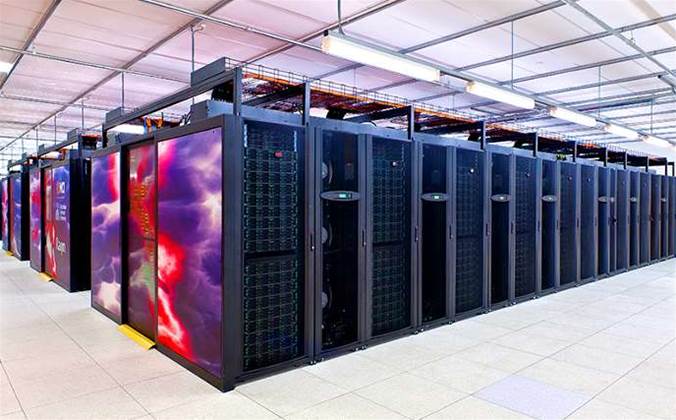The National Computational Infrastructure (NCI) will launch a major upgrade of its high-performance compute and storage capabilities, thanks to a combined $14 million funding boost from the federal government and research agencies.

The grant will pay for a 30 percent uplift in supercomputer throughput, representing an additional 150 million compute hours for researchers, along with a 3 petabyte increase in the storage capacity with the replacement of its oldest Lustre storage system.
The federal government is contributing $7 million to the upgrades through the National Collaborative Research Infrastructure Strategy (NCRIS) Agility Fund, which will be matched dollar-for-dollar by NCI's collaborating partners.
The extra compute will help alleviate supply shortages until a replacement can be built for NCI’s main Raijin HPC compute cluster, which was originally installed in 2012 and is the largest supercomputer in Australia in terms of core count.
iTnews understands NCI is currently evaluating a number of next generation technologies, with a further announcement expected in the coming weeks.
NCI is one of two tier-one supercomputer centres in Australia, alongside the Pawsey Centre in Western Australia, providing compute services to 4000 researchers in more than 80 percent of Australian universities, along with government science agencies, medical research institutes and industry.
“Researcher demand is currently outstripping NCI’s current HPC system … This expansion is a most welcome boost as demand for high-performance computing is increasing in every area of research and in every research organisation,” NCI associate director Allan Williams said in a statement.
The upgrades come on top of the 14 nodes NCI added to Raijin at the end of May, with the cluster now boasting a total of 3609 compute nodes and 57, 864 compute cores, giving it a total 1.37 petaflops of total compute power.
Each of the new Dell nodes included two 12 core Intel Haswell E5-2670v3 processors at 2.3 GHz and four NVIDIA Tesla K80 Accelerators (a total of eight GPUs), giving Raijin an additional 175 teraflops of compute capability in total.
The Fujitsu PRIMERGY cluster also currently has 162 terabytes of total memory and 7.6 petabytes of local Lustre scratch storage accessible at 150 gigabits per second, with access to a further 25 petabytes of global Lustre storage.
NCI was recently selected to host a major regional data repository as part of the European Space Agency’s (ESA) Copernicus Earth observation satellite project.
The regional hub will be Copernicus’ master data repository for the South-East Asia and South Pacific region, with NCI’s HPC capabilities to be used to crunch data from the satellite program.
A recent federal government report into research infrastructure recommended NCI and Pawsey should synchronise future upgrades “in a planned, alternating fashion” to ensure there is always HPC capacity available to researchers.










 iTnews Executive Retreat - Security Leaders Edition
iTnews Executive Retreat - Security Leaders Edition











_(1).jpg&h=140&w=231&c=1&s=0)



